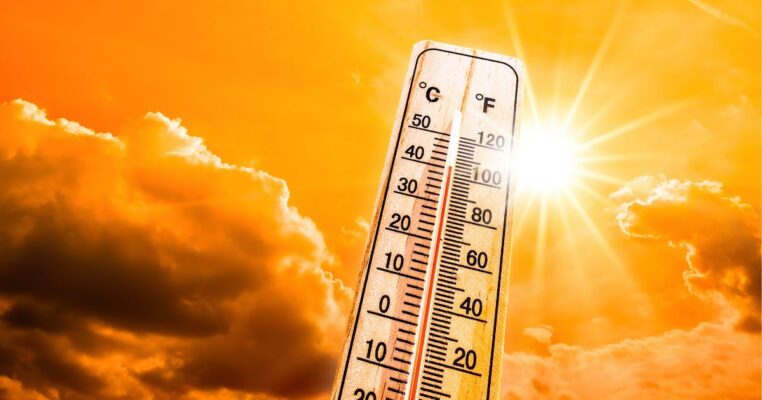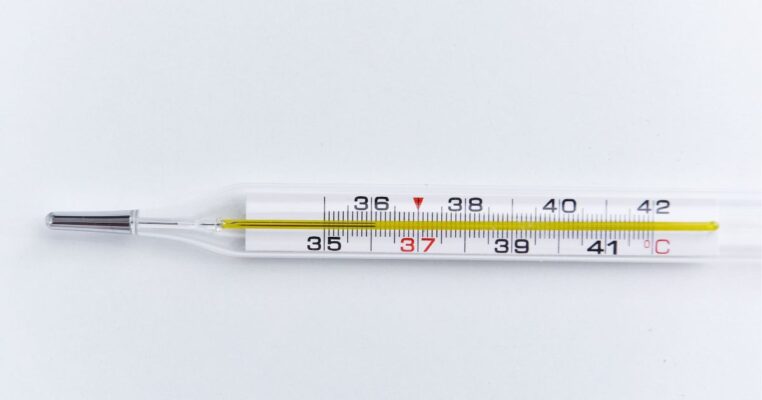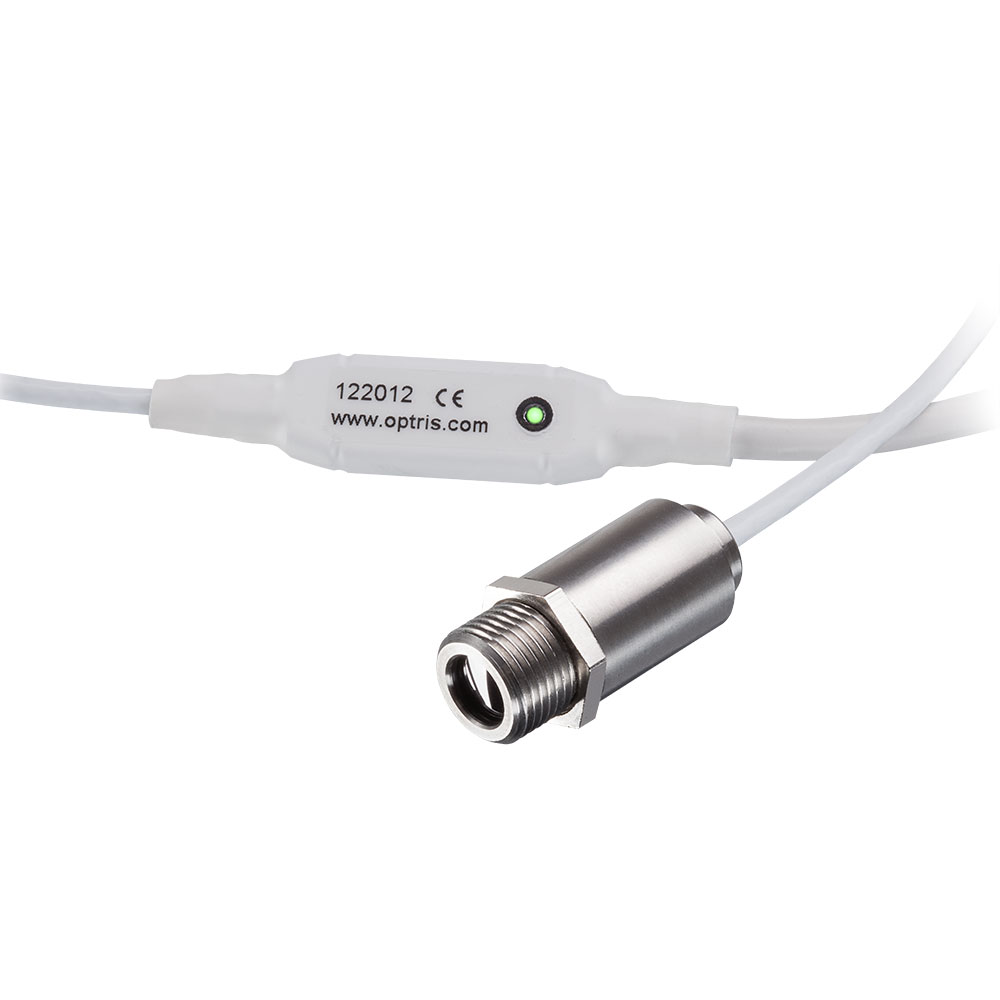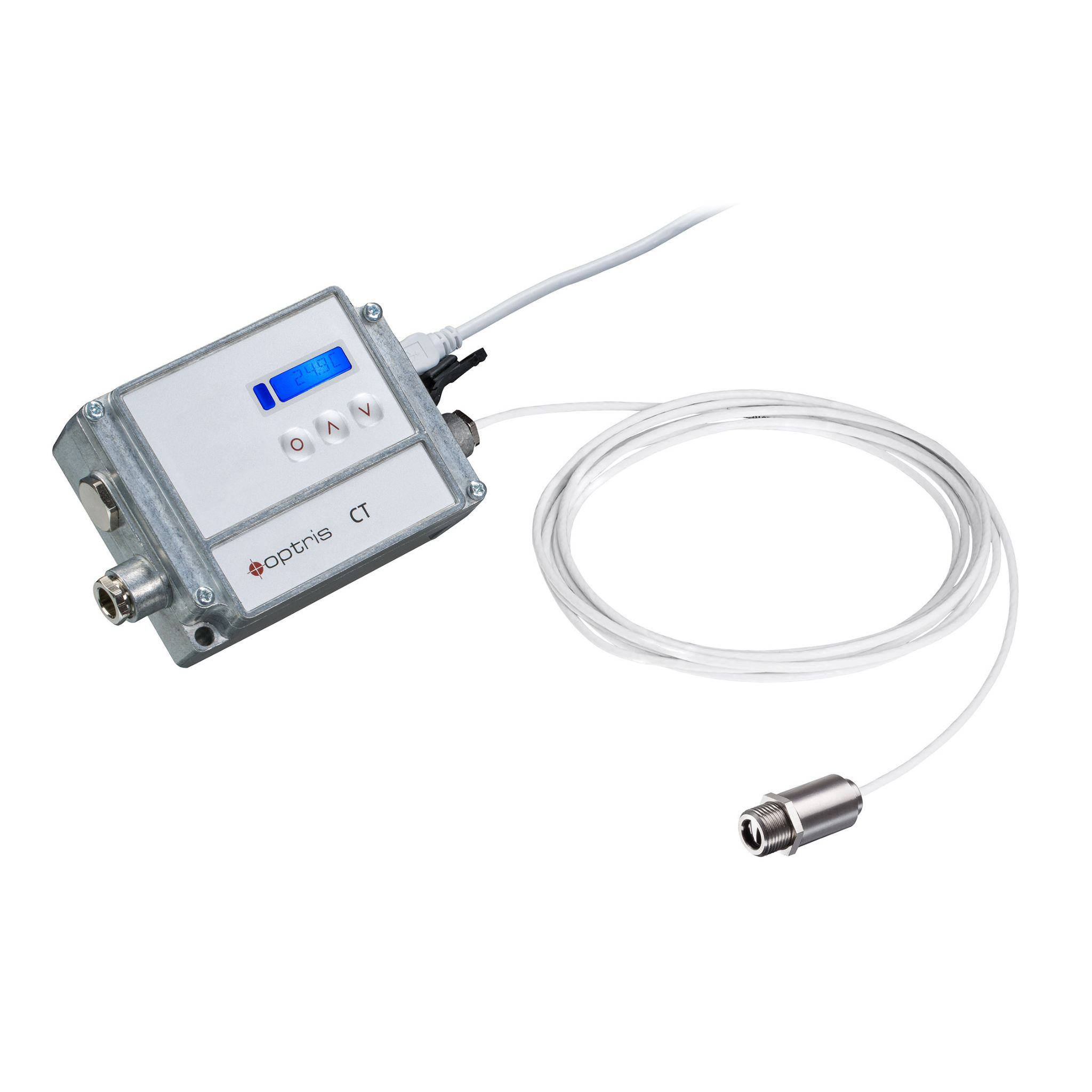What is a Thermometer: Everything You Need to Know
A Guide to Thermometers
Thermometers allow us to measure heat levels from checking a child’s fever to ensuring food safety and monitoring industrial processes. This essential device gives temperature measurements we’ve come to rely on for many aspects of daily life.
So, what exactly is a thermometer?
In this guide, we’ll cover:
- What a thermometer is
- How does a thermometer work?
- The history of thermometers
- Different types of thermometers
- How thermometers are used in different industries
- FAQs
So, let’s dive in.
At Process Parameters, we provide a wide range of temperature measurement solutions to meet the diverse needs of various industries. For more information or to request a quote, get in touch today!
Contact usWhat is a Thermometer?
A thermometer is a device used to measure temperature. While different types measure temperature through various means, they all utilise a sensor to detect heat levels and provide a numerical reading.
The most common type is the liquid-filled glass thermometer containing a sealed glass tube with a reservoir at the bottom. Inside is a liquid (typically mercury, alcohol, or a coloured liquid) that expands and rises up the narrow tube as the temperature increases. The length of the liquid column corresponds to the temperature measurement on the calibrated scale along the tube.
Another popular option is the digital thermometer which uses a thermistor sensor to measure the resistance of the device as temperature changes. The readings get converted to a digital numerical display, providing faster and more precise temperature readouts than analogue versions.
Beyond the household mercury or digital varieties, there are also speciality thermometers designed for specific purposes like:
- Infrared (laser) thermometers to measure surface temperatures without contact
- Probe thermometers to insert into foods while cooking
- Industrial thermometers for commercial/scientific applications
- Weather monitoring thermometers to track outdoor temperatures

How Does a Thermometer Work?
A thermometer works by measuring the temperature of an object or environment. There are several types of thermometers, but the basic principle remains the same.
In a traditional mercury thermometer, for example, a long, narrow glass tube is filled with mercury and sealed at both ends. As the temperature changes, the mercury expands or contracts, causing it to rise or fall within the tube. The temperature is then read from a scale marked on the tube.
Digital thermometers, on the other hand, use electronic sensors to measure temperature. These sensors detect changes in temperature and provide a digital readout of the measured temperature.
Infrared thermometers work by detecting the infrared energy emitted by an object. They use a lens to focus the infrared energy onto a detector, which then converts the energy into an electrical signal. The thermometer then calculates the temperature of the object based on the intensity of the infrared radiation.
Regardless of the type, the thermometer’s ability to measure temperature relies on the principles of thermal expansion and contraction. When the temperature increases, the particles in the substance (such as mercury or the sensor in a digital thermometer) gain energy and move more rapidly, causing the substance to expand.
Conversely, when the temperature decreases, the particles lose energy and move more slowly, causing the substance to contract.
The Basic Concept of Temperature Measurement
Temperature is a measure of the average kinetic energy of the molecules within a substance. When we measure temperature using a thermometer, we are making a statement about how fast the molecules are moving.
Thermometers do not measure heat directly, but rather the temperature of an object. The prefix “thermo-” refers to heat, and “dynamics” refers to the study of heat. Therefore, “thermodynamics” is the study of heat.
Temperature measurement is the process of determining the level of heat or coldness of an object or environment. It is based on the fact that objects expand when heated and contract when cooled. When using a thermometer, the temperature is usually measured in relation to a temperature scale.
The most commonly used temperature scales are Fahrenheit, Celsius, and Kelvin. These scales have reference points, such as the freezing and boiling points of water, which allow for consistent and standardised temperature measurements.
By measuring the expansion or contraction of a substance, a thermometer can provide a numerical value that represents the temperature of an object or environment.

Read our guide ‘What is temperature?‘ for more information.
What is the History of Thermometers?
The history of thermometers dates back to the early 18th century when Daniel Gabriel Fahrenheit invented the first mercury thermometer and the Fahrenheit scale in 1714.
Around the same time, the Swedish astronomer Anders Celsius proposed the Centigrade scale (later renamed Celsius scale), which defined the freezing point of water as 0°C and the boiling point of water as 100°C.
Initially, thermometers used substances like alcohol or mercury to measure temperature based on their expansion and contraction at different rates. However, these liquid thermometers had limitations, particularly at low temperatures where the liquids could freeze into a solid crystal.
In 1848, Lord Kelvin introduced the Kelvin scale, which used the concept of absolute zero as its lowest temperature, defined as the complete absence of molecular motion. The Kelvin scale is widely used in scientific and industrial applications, especially at high and low temperatures beyond the range of liquid thermometers.
As technology advanced, electronic thermometers emerged, utilising electrical resistance or other properties that change with temperature.
These thermometers, including digital and infrared varieties, offer improved accuracy, faster response times, and the ability to measure a wide range of temperatures, from the temperature of the human body to the temperature of objects in industrial processes.
Today, various kinds of thermometers are available, each suited for different applications. The most common thermometer used in healthcare settings is the digital thermometer, which can measure body temperature through the ear canal, temporal artery, or other methods.
Industrial and scientific applications often rely on thermocouples, resistance temperature detectors (RTDs), or gas thermometers for precise temperature measurements across different scales.
Different Types of Thermometers
There are several different types of thermometers, each with its own unique features and applications.
Some of the most common types include:
Mercury Thermometers
These traditional thermometers use mercury to measure temperature. They are often used in medical settings for measuring body temperature, but their use is becoming less common due to the potential health and environmental risks associated with mercury.
Digital Thermometers
Digital thermometers use electronic sensors to measure temperature and provide a digital readout. They are widely used in both medical and non-medical settings due to their accuracy, ease of use, and quick results.
Infrared Thermometers
Infrared thermometers measure temperature from a distance by detecting the infrared energy emitted by an object. They are commonly used in industrial and medical settings and are particularly useful for measuring the temperature of moving objects or in hard-to-reach areas.
At Process Parameters, we supply Optris infrared thermometers which are renowned for their next-level thermography.
View our range of IR cameras or contact us for a free quote.
Send An EnquiryGeneral Purpose IR Thermometers
General Purpose IR Thermometers
General Purpose IR Thermometers
Thermocouple Thermometers
Thermocouple thermometers use two different metals to measure temperature. They are often used in industrial applications due to their wide temperature range and fast response time.
Bimetallic Strip Thermometers
These thermometers use a bimetallic strip made of two different metals bonded together. When the temperature changes, the strip bends, causing a pointer to move across a scale to indicate the temperature.
Liquid Crystal Thermometers
These thermometers contain heat-sensitive liquid crystals that change colour to indicate temperature. They are often used for home and personal use, such as in aquariums or for fever monitoring.
Each type of thermometer has its advantages and is used in different situations based on its specific features and capabilities.
How Thermometers Are Used in Different Industries
Thermometers are used in a wide variety of settings, from medical offices to kitchens to industrial facilities. They are an essential tool for monitoring and controlling temperature in many different processes and applications.
Here’s how thermometers are used in different industries:
Food Industry
In the food industry, thermometers are used to ensure that food is cooked to a safe temperature to kill harmful bacteria and prevent foodborne illnesses. Food probes and infrared food thermometers are used for various foods, such as meat, poultry, and baked goods, to ensure that they are cooked to the proper temperature.

Healthcare Industry
In the medical field, thermometers are used to measure body temperature, which is an important indicator of health. Digital thermometers, infrared thermometers, and mercury-in-glass thermometers are commonly used in hospitals, clinics, and medical facilities to measure patients’ temperatures accurately.
Manufacturing and Industrial Processes
In industrial settings, thermometers are used to monitor and control temperature in processes such as manufacturing, chemical reactions, and environmental control. They are often used in combination with other instruments and devices to ensure that temperature-sensitive processes are operating within the desired parameters.
Thermocouple sensors, resistance temperature detectors (RTDs), and bimetallic thermometers are used to monitor and control temperatures in furnaces, reactors, and other high-temperature environments.

HVAC and Building Management
In the heating, ventilation, and air conditioning (HVAC) industry, thermometers are used to monitor and control indoor temperatures for comfort and energy efficiency. Thermostats, which incorporate thermometers, regulate the heating and cooling systems in residential and commercial buildings.
Automotive Industry
Thermometers are essential in the automotive industry for monitoring engine temperatures, coolant temperatures, and other critical temperature measurements. Engine coolant temperature sensors and infrared thermometers are used to ensure proper engine operation and diagnose potential issues.
Scientific Research and Laboratories
In scientific research and laboratories, precise temperature measurements are crucial for various experiments and analyses. Thermometers like RTDs, thermocouples, and digital thermometers are used in a wide range of applications, such as monitoring chemical reactions, environmental studies, and material testing.
Environmental Monitoring
Thermometers are used in environmental monitoring to measure air, water, and soil temperatures. These measurements are essential for understanding climate patterns, monitoring ecological systems, and studying the impacts of temperature changes on various ecosystems.
Regardless of the type, thermometers have evolved to provide accurate temperature readings, enabling us to monitor and control temperature in countless fields, from meteorology and medicine to manufacturing and research, ultimately contributing to our understanding and utilisation of thermal energy.
Thermometers from Process Parameters
Thermometers are an essential tool for measuring and monitoring temperature in a wide range of applications. Whether it’s for medical, culinary, or industrial purposes, having an accurate and reliable thermometer is crucial for ensuring the safety and efficiency of various processes.
Selecting the appropriate temperature measurement device is crucial for ensuring optimal performance in your industrial processes.
Process Parameters is a leading provider of top-quality temperature measurement devices and services. We are committed to exceeding your expectations with:
- Custom Solutions for Industry-Specific Needs: Our team can design and manufacture custom temperature measurement devices to meet your specific requirements.
- State-of-the-art Equipment: We utilise the latest advancements in temperature measurement technology to ensure the highest levels of accuracy and reliability.
For more information or to request a quote, contact Process Parameters today. Our experts are ready to help you find the perfect temperature measurement solution for your specific industrial application.
Email us at sales@processparameters.co.uk, call 01628 778788, or complete our online enquiry form.
Send an EnquiryFAQs
How do infrared thermometers work?
Infrared thermometers work by detecting the infrared energy emitted by an object based on its temperature. They use a lens to focus the infrared energy onto a detector, which converts the energy into an electrical signal. The thermometer then calculates the temperature reading of the object based on the intensity of the infrared radiation emitted.
What is the red liquid in a thermometer?
The red liquid commonly found in liquid thermometers is typically a coloured alcohol-based solution. This liquid, often composed of a mixture of dyes and organic compounds like propylene glycol or glycerin, expands and rises in the calibrated glass tube as the temperature rises, allowing for temperature measurement by observing the liquid column’s height.
What is a mercury thermometer?
A mercury thermometer is a traditional thermometer that uses mercury to measure temperature. It consists of a glass tube with a bulb at one end containing mercury. As the temperature changes, the mercury expands or contracts, allowing the temperature reading to be read from a standard scale on the tube. However, due to the toxicity of mercury, these thermometers are being phased out in modern times in favour of safer alternatives like digital thermometers or alcohol thermometers.
What is the resolution of a thermometer?
The resolution of a thermometer refers to the smallest increment or change in temperature that the thermometer can detect and display on its scale or digital display. It indicates the level of detail in temperature measurement. For example, a thermometer with a resolution of 0.1°C can detect changes in temperature as small as 0.1 degrees Celsius.
What is a thermometer used for in science?
In science, thermometers are essential instruments used to measure and monitor temperature in various experiments, research, and laboratory settings. They are crucial for controlling and observing temperature-dependent reactions, determining the melting and boiling points of substances, and studying the effects of temperature on physical changes and chemical processes across different temperature scales.
What is in a thermometer?
A traditional liquid thermometer typically consists of a long, narrow glass tube filled with a liquid, such as mercury or coloured alcohol, and sealed at both ends. The liquid expands and contracts with changes in temperature, causing it to rise or fall within the tube. The temperature reading is then obtained by observing the level of the liquid column against a calibrated scale marked on the tube.
What is a digital thermometer?
A digital thermometer is an electronic device used to measure and display temperature readings in a digital format. It typically features a temperature sensor that converts the temperature into an electrical signal, which is then processed and shown on a digital display. Digital thermometers are widely used in various settings, including healthcare (for measuring body temperature), industrial processes, scientific research, and households, due to their accuracy, ease of use, and quick results.
Related Articles:
- What is a Thermocouple?
- What is a Temperature Transmitter?
- 5 Different Types of Thermal Sensor
- Comparing Contact and Non-Contact Temperature Sensors
- What Is A Temperature Sensor?
- How Do Thermal Imaging Cameras Work?
- 5 Benefits & Applications of Thermal Imaging Cameras
- 5 Best Infrared Thermometers
- What is an RTD?
- A Guide to Common Industrial Temperature Measurement Devices
- Guide to Temperature Sensors For Glass Melting Furnaces





